






EDITION: OCTOBER 2025












EDITION: OCTOBER 2025




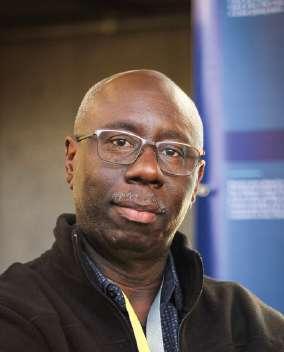


This report is a FREE Publication written and authored through collaboration with RDJ Consulting Services CC based in Windhoek, Namibia
The content is collected from publicly available information and so its accuracycannotbeguaranteed.





N A M I B I A
Gross Domestic Product (GDP) (nominal terms) (2024)
COEFFICIENT (2023)
BROADBAND
(PER 100) (2023)
(CPI) (Sep 2025)
- October (Published 15 October 2025)

A"rtificial Intelligence" (AI) has become an everpresent part of our daily conversations, from discussions about groundbreaking innovations
in technology to the ethical implications of its rapid advancement But what exactly is AI, and how does it impact our lives?
At its core, artificial intelligence refers to: the
simulation of human intelligence in machines programmed to think and learn like humans.
This technology encompasses a variety of subfields, including machine learning, natural language processing, robotics, and computer vision. Machine learning, a predominant subset of AI, allows systems to learn from interactions, data patterns and improve their performance over time without explicit programming
Natural language processing enables computers to understand, interpret, and respond to human language, making interactions with machines more intuitive As a result, AI can be applied in diverse sectors, including healthcare, finance, education, transportation, and entertainment, crafting solutions to problems that were traditionally considered labor-intensive or time-consuming
The impact of AI on daily life is profound, often invisible, yet increasingly significant One of the most relatable examples of AI is found in our smartphones. Virtual assistants like Siri and Google Assistant have transformed how we interact with our devices, allowing us to set reminders, send messages, and access information with just our voice These tools use sophisticated algorithms to interpret and respond to our requests, showcasing the potential of AI to enhance productivity and communication
In the realm of social media, AI algorithms curate our news feeds and suggest content tailored to our interests. Facebook, Instagram, and Twitter utilise machine learning
techniques to analyse user engagement and preferences, delivering personalised experiences that keep us engaged. However, this also raises concerns about filter bubbles and the reinforcement of echo chambers, as algorithms prioritize content that aligns with our existing beliefs
AI’s impact extends beyond convenience to more critical sectors, such as healthcare. Consider the role of AI in diagnostics; algorithms can analyse medical images more quickly and accurately than human radiologists, identifying anomalies such as tumors or fractures AI-driven applications help doctors make informed decisions based on patient data, which, in turn, can lead to earlier interventions and improved patient outcomes. For instance, IBM's Watson has made significant strides in oncology, assisting doctors in developing personalised treatment plans based on the latest research and patient-specific data
In the classroom, AI tools such as intelligent tutoring systems are revolutionising education. These systems adapt learning experiences to individual student needs, providing personalised feedback and resources that help address each learner's unique challenges This tailored approach to education has the potential to improve learning outcomes and ensure that students receive the support they need to succeed
Transportation is another area experiencing dramatic transformation through AI. Autonomous vehicles are no longer the stuff of science fiction Companies like Tesla and Waymo are leading the charge in developing self-driving cars equipped with advanced AI systems that can navigate complex environments While the widespread adoption of

contributed by:
Namibia has advanced its local content framework by signing a memorandum of understanding (MoU) to build local talent for its emerging oil and gas
industry
The Petroleum Training and Education Fund (PETROFUND) signed the agreement on Wednesday, October 8, with support from U S engineering firm McDermott International The partnership comes as Namibia prepares to launch offshore projects following major deepwater discoveries by Shell and TotalEnergies
The collaboration will focus on developing and implementing technical, academic, and managerial training programs aligned with international industry standards McDermott will contribute expertise in offshore engineering, construction, and operations, while PETROFUND will oversee local implementation, including selecting trainees, securing financing, and placing graduates in both public and private sector positions.
The main objective is to build a skilled Namibian workforce capable of meeting the future demands of the oil industry,
particularly in the design and maintenance of petroleum infrastructure
This partnership is the latest initiative underscoring the government’s long-term commitment to its local content policy, established under the 1991 Petroleum Act. In 2023, Namibia signed similar agreements with Nigeria and Equatorial Guinea to draw on their experience in developing domestic capacity in the hydrocarbons sector
“Our partnership with McDermott supports PETROFUND's mandate to build the capacity of Namibia's workforce and service providers to participate in the emerging opportunities within the country's upstream oil and gas industry,” said Nillian Mulemi, head of PETROFUND
Under its National Development Plan (NDP6 2025–2030), Namibia aims to raise local content and participation in the oil sector, currently around 10%, to 15% by 2030.
Abdel-Latif Boureima
In a rapidly evolving technological landscape, Africa stands on the brink of a transformative era characterized by the emergence of artificial intelligence
(AI) We have noted this in previous editions but as the global dialogue shifts toward ethical innovation, the continent, and specifically Namibia, is positioned to harness its tech talent to not only participate in this digital revolution but to also lead with a purpose-driven approach. Strive Masiyiwa, a prominent African (Zimbabwean) entrepreneur, has highlighted how Africa can spearhead the global AI movement, suggesting a unique path that intertwines technology with ethical considerations, local solutions, and economic growth
The intersection of ethical innovation, and Africa’s mushrooming tech talent, positions the continent as a potential powerhouse in the global AI landscape. By fostering an environment that prioritizes ethical considerations, collaborative networks, and homegrown solutions, Namibia and Africa by extension, can not only contribute significantly to the global economy but also redefine the parameters of technological advancement to be more inclusive and representative of diverse needs.
The commitment to harnessing local solutions can drive transformative change that benefits not just Namibia, but the global community Namibian innovators can develop AI applications that address local challenges such as agriculture, healthcare, or education, through a lens of ethical considerations that respect community values and human rights.
As AI technologies proliferate, questions around surveillance, privacy, and biases threaten to undermine their benefits
Africa can redefine this narrative by championing ethical frameworks that prioritize transparency, inclusion, and social responsibility.
This ethical foundation offers Namibian companies the chance to create transformative, homegrown solutions that directly resonate with the needs of their communities. For instance, leveraging AI to optimise agricultural productivity can directly impact food security, while health-tech innovations can enhance access to essential medical services across remote regions Such initiatives not only
tackle pressing issues domestically but also align with global Sustainable Development Goals (SDGs), positioning Namibia as a key player on the world stage
As the world moves towards digitalisation, the importance of connectivity cannot be overstated Namibia’s geographical location provides a strategic advantage in becoming a hub for tech innovation and collaboration. Investment in internet infrastructure and digital literacy will enhance connectivity, enabling broader participation in the global economy By equipping the youth with necessary skills in AI and technology, Namibia can create a robust talent pipeline that meets the demands of both local industry and international markets.
Moreover, Africa's burgeoning tech sector is ripe with opportunity Ethical innovation serves as a catalyst for economic growth, encouraging international partnerships that can uplift local businesses As multinationals recognise Namibia’s unique potential, they may be more inclined to invest in the ecosystem, fostering an environment where both local startups and established firms can thrive. This influx of capital and expertise will drive job creation and enhance the quality of life for many Namibians
The concept of opportunity is particularly heartbreaking when considering socio-economic disparities across the continent. By focusing on ethical tech solutions, Namibia can promote inclusivity and ensure that the benefits of AI do not perpetuate existing inequalities. Engaging in publicprivate partnerships that prioritize ethical AI development can empower marginalised communities, providing them access to technology tailored to their circumstances
Namibia’s road to becoming a leader in ethical innovation is one that requires intentional action. Stakeholders must collaborate to create policies that support tech while embedding ethical considerations in every phase of innovation Educational institutions in particular at the

contributed by:
Namibia and Botswana met in Swakopmund to boost digital cooperation and broadband growth. They toured the WACS cable site and explored opportunities for regional integration and digital transformation. Internet access is expanding, but rural areas continue to face high costs and limited coverage.
Namibia and Botswana have reaffirmed their commitment to advancing digital cooperation and regional connectivity through a high-level bilateral
working visit held in Swakopmund, the Communications Regulatory Authority of Namibia CRAN announced on October 12.
Hon Emma Theofelus, Namibia’s Minister of Information and Communication Technology, and her Botswana counterpart, Hon David Tshere, led the discussions aimed at strengthening collaboration in digital infrastructure, innovation, and broadband expansion.
The delegation toured the West Africa Submarine Cable System (WACS) landing site, an essential gateway linking Namibia to global internet networks and held engagements with representatives from Telecom Namibia, MTC Namibia, the Botswana Communications Regulatory Authority (BOCRA), and the Communications Regulatory Authority of Namibia (CRAN) to explore opportunities for regional integration and digital transformation
The latest engagement builds on more than a decade of ICT cooperation between the two neighbouring countries In 2012, both governments jointly supported the landing of the WACS cable in Swakopmund, investing about N$320 million
each to enhance international bandwidth access
In recent years, private sector players such as Paratus have complemented these efforts through the Trans-Kalahari Fibre (TKF) and Botswana Kalahari Fibre (BKF) routes, which connect Johannesburg to Swakopmund via Gaborone and Walvis Bay The 840 km BKF route, completed in March 2024, represents a BWP 70 million investment that positions Botswana to access Namibia’s undersea cable capacity directly.
Regulatory bodies CRAN and BOCRA have also signed memoranda of understanding on data protection, cybersecurity, and roaming harmonisation, with crossborder roaming charges set to be reduced in 2024 to support affordable connectivity for travellers and businesses.
While Namibia’s internet penetration stands at 62 percent and Botswana’s at approximately 77 percent, according to Internet Society data, both countries continue to face challenges in rural coverage and affordability The expansion of fibre links, improved cross-border coordination, and digital policy alignment are expected to lower costs and extend access to underserved communities.
Hikmatu Bilali
2025)

Author’s analysis and representation of NamWater’s weekly dam bulletin - dated 13 October 2025
According to records by NamWater’s weekly Dam Bulletins, Namibia has a total Reservoir capacity of 1556.71 million cubic meters (Mm3), whose present volumes stand at 1286.01 Mm3 (or 82.6%). This means that the country’s water deficit is currently 270.7 Mm3 (or 17.4%)
contributed by:
Namibia is in talks with Angola to use the Angosat-2 satellite to expand telecom coverage, particularly in rural areas.
The project could support Namibia’s goal of achieving 100% telecom coverage by 2030. Angosat-2, operational since 2023, already connects over 300,000 people across Africa and supports high-speed Internet, TV, and voice services.
Namibia’s government announced on October 13 that it is working with Angola to explore the use of the Angosat-2 satellite to improve national
connectivity, especially in underserved regions with limited terrestrial infrastructure. The initiative is being led jointly by state-owned Telecom Namibia and Angola’s National Space Management Office (GGPEN)
In June 2025, both parties began discussions, reported by Space in Africa, on a proof of concept (PoC) to assess the satellite’s capacity to meet Namibia’s connectivity needs. The test aims to evaluate high-speed internet for remote areas, strengthen Telecom Namibia’s backbone network,
and develop cost-effective alternatives to terrestrial systems The talks also explored the role of satellite technology in optimizing network expansion.
Launched in 2022 and commissioned in early 2023, Angosat2 is a high-throughput (HTS) telecommunications satellite positioned in geostationary orbit It provides C, Ku, and Kaband services across the African continent and parts of Europe The satellite delivers broadband internet, television, and telephony services to areas beyond the reach of terrestrial networks.
In August 2023, Angola announced technical upgrades to
allow other Southern African Development Community (SADC) countries to access Angosat-2’s services. According to DataReportal, Angola’s number of Internet users rose from 11 78 million in January 2023 to 17 2 million by January 2025, with Angosat-2 contributing to an additional 300,000 connected users by October 2024
The GSM Association (GSMA) said in its 2024 Mobile Economy Sub-Saharan Africa report that satellite connectivity will play a key role in achieving universal access across the region “Sub-Saharan Africa includes some of the world’s most challenging terrains for terrestrial networks rainforests, deserts, and mountain ranges,” the GSMA said “Even in rural areas, the cost and complexity of deploying traditional networks make alternative solutions attractive. ”
Namibia’s effort aligns with its 2030 universal telecom coverage target In March 2025, the country launched its Universal Service Fund (USF), backed by 145 million Namibian dollars (about $8 3 million), to finance rural telecom expansion
Despite progress, about 360,000 Namibians roughly 12% of the population remained outside 4G coverage as of February 2024, according to the International Telecommunication Union (ITU) The 3G network reached 89% of the population, while 2G already covered the entire territory The digital gap also affects essential services, with 339 schools and 50 health centers still lacking adequate Internet access
Negotiations between Namibia and Angola remain ongoing, and no formal agreements or projects have yet been announced As of 2025, ITU data show Namibia’s Internet penetration rate at 62 2%
This article was initially published in French by Isaac Kassouwi
Adapted in English by Ange Jason Quenum
contributed by:
ICASA to require Telkom to provide free Wi-Fi at 171 centers Plan includes 30 Mbps speed, 2 GB monthly cap per user Move updates old obligations to align with digital access goals
South Africa’s communications regulator, ICASA, plans to mandate that Telkom, the semi-public telecom operator, provide free Wi-Fi at 171 Thusong Service
Centers. These government-run one-stop hubs offer citizens access to essential information and public services. The proposal was published in the government gazette on Tuesday, October 7
ICASA has set service standards, including a minimum speed of 30 Mbps and unlimited internet access Telkom will be responsible for supplying and installing routers, firewalls, and cabling, as well as deploying Wi-Fi access points in each centre. Individual users will have a daily cap of 300 MB and a monthly limit of 2 GB
The initiative stems from Telkom’s 1997 Public Switched Telecommunications Service (PSTS) license, which introduced Universal Service and Access Obligations (USAOs), requirements that initially covered basic phone service, payphones, emergency calls, accessibility for users with
disabilities, and directory assistance.
ICASA noted that with the rise of mobile telephony and other technological advances, some of Telkom’s older USAOs have become outdated and require revision Meanwhile, many Thusong centers remain without internet connectivity.
The project aligns with the South African government’s goal of expanding universal internet access as part of its digital transformation strategy The government recently set aside 710 million rand ($41 million) to continue SA Connect, the national broadband program. Its second phase aims to connect 80% of public institutions, communities, and households to broadband. The first phase served as a pilot, delivering 10 Mbps connections to nearly 970 public institutions
Isaac K. Kassouwi


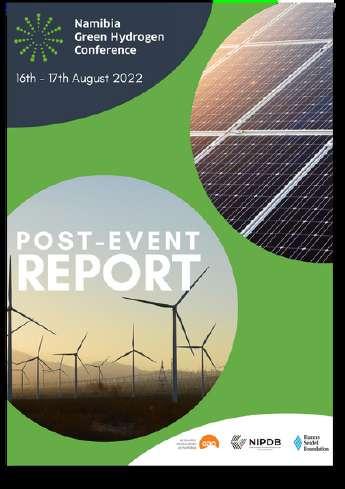
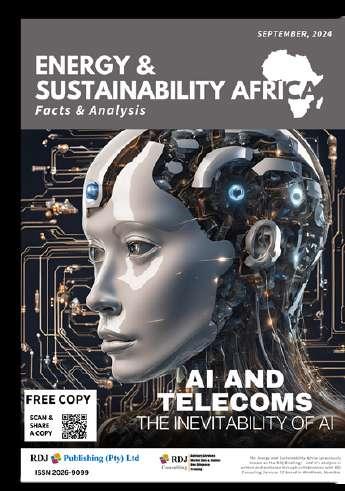


contributed by:
Google offers free AI Pro to students in 8 African nations, raising hopes for skills but also concerns over data use. Weak regulation could turn Africa into a low-cost testing ground for global AI tools. Benefits for students are real, yet risks of dependency, IP loss and hidden costs remain.
On September 18, 2025, Google unveiled a headlinegrabbing initiative: one year of free access to its premium suite, Google AI Pro, for students in eight
African countries Egypt, Ghana, Kenya, Morocco, Nigeria, Rwanda, South Africa and Zimbabwe The bundle includes Gemini 2 5 Pro, the “Deep Research” tool for generating reports, and expanded cloud storage It is presented as part of Google’s broader effort to support digital skills and innovation on a continent where the student population is both young and growing fast.
The scale of the giveaway might be seen impressive However the selection of countries raise questions about the existence or not of a strategic dimension These nations cover linguistic areas where Google’s models have historically underperformed: Maghrebi Arabic, Swahili, Nigerian Pidgin, Zulu and Shona. By providing tools to students who use these languages in daily academic work, Google gains access to a vast pool of real-world interactions that could help train and refine Gemini For the company, Africa is not only a growth market but also a rich source of linguistic diversity that can strengthen its global AI products.
Regulation adds another layer of complexity. Unlike the European Union, which has enforced its AI Act, or the United States, where oversight is fragmented but active, most African countries still lack comprehensive AI legislation This means fewer formal checks on how data is collected, stored and reused. While the offer reduces barriers for students, it also highlights the uneven regulatory landscape that shapes how technology giants operate across different regions
There are also academic implications Tools like “Deep Research” , can generate essays and reports in seconds, but many universities in Africa continue to rely on plagiarismdetection systems that struggle with AI-generated text. Without robust safeguards, the line between genuine student work and AI-assisted submissions could blur, complicating how universities uphold academic integrity Faculty capacity to adapt to this new reality remains uneven across the region
Beyond the classroom, questions emerge about the labourmarket impact. Google positions the initiative as preparing students for the digital workplace, and exposure to
advanced tools may indeed sharpen skills. Yet critics note that widespread familiarity with AI could also channel graduates into lower-paid, repetitive digital tasks for global platforms reinforcing Africa’s role as a supplier of affordable digital labour rather than a hub of higher-value innovation
Intellectual property is another area of concern. When students create theses, business plans or prototypes using AI Pro, these outputs are stored on Google’s servers While students retain ownership of their ideas in principle, the legal and commercial implications of producing work within a proprietary ecosystem remain uncertain, particularly in jurisdictions where IP law is underdeveloped or inconsistently enforced.
The free model itself raises sustainability issues After twelve months, subscriptions revert to standard pricing around US$20 per month For many students, that cost
could be prohibitive. Universities might be expected to absorb the expense, potentially diverting scarce resources from local technology infrastructure or other academic priorities The programme therefore risks creating dependency on a service that may not be affordable in the long term
Taken together, Google’s initiative offers both real opportunities and unresolved challenges. For students, it opens access to powerful tools that could accelerate learning and innovation For Google, it represents a strategic investment in data, markets and talent pipelines The balance between empowerment and dependency will depend largely on how African institutions, governments and civil society respond whether by setting conditions for transparency and data governance, or by allowing Silicon Valley to define the terms of engagement
Idriss Linge
contributed by:
Zambia has urged the AfDB to partner on new AI-driven polytechnics and support the University of Zambia’s Innovation Village to build future-ready skills for mining and agriculture. The call follows the success of the US$29.4m STEP project, which modernised UNZA and trained over 150,000 students, including 24% women in STEM.
The initiative targets 3m tons of copper and 10m tons of agricultural output by 2031, addressing Zambia’s skills gap in key growth sectors.
Zambia’s Minister of Technology and Science, Felix C. Mutati, has called on the African Development Bank (AfDB) to deepen its partnership with the
government to establish new polytechnic institutions and support the University of Zambia’s (UNZA) Innovation Village. The appeal aims to equip Zambia’s future workforce with advanced skills in emerging technologies, including artificial intelligence (AI), to strengthen the country’s key economic sectors of mining and agriculture
The minister made the call during a visit on October 8 by AfDB Senior Vice President Marie-Laure Akin-Olugbade to the University of Zambia. Both parties celebrated the successful completion of the Bank’s earlier Skills and Training Enhancement Project (STEP) a US$29 4 million investment launched in 2013 The project modernised lecture theatres, installed state-of-the-art laboratories in the Schools of Engineering and Mines, and increased access to skills training for more than 150,000 students. Over
11,400 merit-based scholarships were awarded, with 24% going to female students, marking a significant step toward gender inclusion in Science, Technology, Engineering and Mathematics (STEM)
Building on this success, Zambia now seeks AfDB’s partnership in two key areas. First is support for the University Innovation Village (I-Village) a hub that will connect academia, government, and industry to accelerate innovation and technology adoption The I-Village will focus on Agritech, Healthtech, Fintech, and Precision Mining, reflecting Zambia’s broader economic vision and alignment with Vision 2030 and the African Union’s Agenda 2063. It is expected to foster entrepreneurship, facilitate research commercialisation, and provide a collaborative environment where students and researchers can co-create solutions with industry partners
Secondly, the government is revising its laws to integrate polytechnics into the higher education framework and is
seeking AfDB’s support to establish a model institution powered by emerging technologies such as AI. The aim is to develop a skilled workforce capable of driving Zambia’s ambitious targets of producing 3 million tons of copper and 10 million tons of agricultural output by 2031 According to the World Bank, copper accounts for about 15% of Zambia’s GDP and over 70% of its export earnings, yet output has remained stagnant at around 800,000 metric tons annually since 1969. The Bank notes that tripling copper production will significantly increase demand for skilled workers, underscoring the critical role of universities and technical training institutions in meeting industry needs
Minister Mutati emphasised that this new phase of collaboration must be based on shared investment and sustainability, declaring, “The old Africa of gifts is long gone ” He assured AfDB that Zambia is ready to co-invest to ensure ownership and long-term impact
Hikmatu Bilali

As RDJ Consulting we pride ourselves as specialised consultants who provide advisory services, market data and studies, due diligence and offer world class training within our core business area. Collaboration forms an intergral part in what we do as for this year, we are making it that a priority.
Asia
Britain Caribbean Southern Africa
USA
Our innovative strategies are baked daily at 40 Copper Street, Prosperita, Windhoek, Namibia.
Contact us today to discover how our unique services add value to your business!


Source: Erongo RED (https://www erongored com/consumtion-index/)
contributed by:
MTN is building a $240m AI data centre in Nigeria under its Genova unit. Africa holds less than 2% of global data centre capacity despite 18% of the population. The global B2B cloud and data services market could reach $622bn by 2030.
MTN Group Ltd is in commercial talks with US and European partners to co-build artificial intelligence data centres across Africa, Chief
Executive Ralph Mupita told Bloomberg in an interview published on September 16.
MTN has already broken ground on its first such facility in Nigeria, with an investment of about $240 million under its new unit, Genova The plan is to provide AI computing power directly to African businesses and governments, while also leasing capacity to global cloud giants like Microsoft. “We are now in the commercial negotiation phase and shortlisting partners who can help us scale, ” Mupita said, adding that the group’s goal is to finalise partnerships before the end of the year
Despite hosting 18% of the world’s population, Africa accounts for just 1–2% of global data centre capacity, according to Xalam Analytics and Oxford Business Group This mismatch has left the continent dependent on offshore infrastructure, raising costs, creating latency problems, and sparking sovereignty concerns over sensitive data. AI intensifies these pressures, given the immense computing power and energy needed to train and deploy models By localising this infrastructure, MTN and its rivals aim to bring down costs, improve performance, and ensure African data stays within African borders
MTN’s ambitions come as rivals ramp up their own bets. Airtel Africa, through its Nxtra subsidiary, is building a 38MW hyperscale facility in Lagos and a 44MW data centre in Nairobi’s Tatu City, projects that will rank among Africa’s
largest. Microsoft and Abu Dhabi’s G42 are backing a geothermal-powered data hub in Kenya, while Equinix and other global players are eyeing expansions in South Africa and beyond
By integrating AI-ready data centres with their fibre, 5G, and cloud services, operators like MTN and Airtel can offer bundled solutions tailored to local markets. This model allows them to monetise infrastructure, deepen ties with multinationals, and serve governments seeking sovereign digital solutions
Locally hosted data reduces reliance on overseas servers, cutting costs and improving performance for everything from fintech apps to e-commerce platforms. Faster and more reliable digital services can help businesses scale, boost consumer access, and strengthen government platforms Crucially, keeping data on the continent also addresses sovereignty concerns around sensitive information In addition, the build-out of large-scale facilities is expected to generate skilled jobs in engineering, cybersecurity, and AI development, while giving startups the tools to build solutions tailored to local realities.
Nigeria’s Dabengwa Tier III Data Centre, which MTN launched in July and is already planning to upgrade to Tier
IV, illustrates how the narrative is shifting “This investment is not just about infrastructure, but a powerful vote of confidence in Nigeria’s digital economy, ” said Communications Minister Bosun Tijani at the opening Such projects, he argued, create resilience, reduce costs, and give local businesses a competitive edge
Africa’s data centre gap is estimated at more than 1,000MW of additional capacity and 700 facilities over the next few years, according to Oxford Business Group. With the GSMA projecting a $622 billion global B2B cloud and data services market by 2030, African operators see AI data centres not as a side business, but as the next frontier
The move reflects a structural shift in Africa’s telecoms sector. With traditional voice and data margins under pressure, operators are pivoting into cloud hosting, colocation, and AI infrastructure to capture enterprise and government demand By investing in high-margin digital services, MTN is not just diversifying revenue streams but also positioning itself as a backbone for Africa’s digital economy.
Hikmatu Bilali

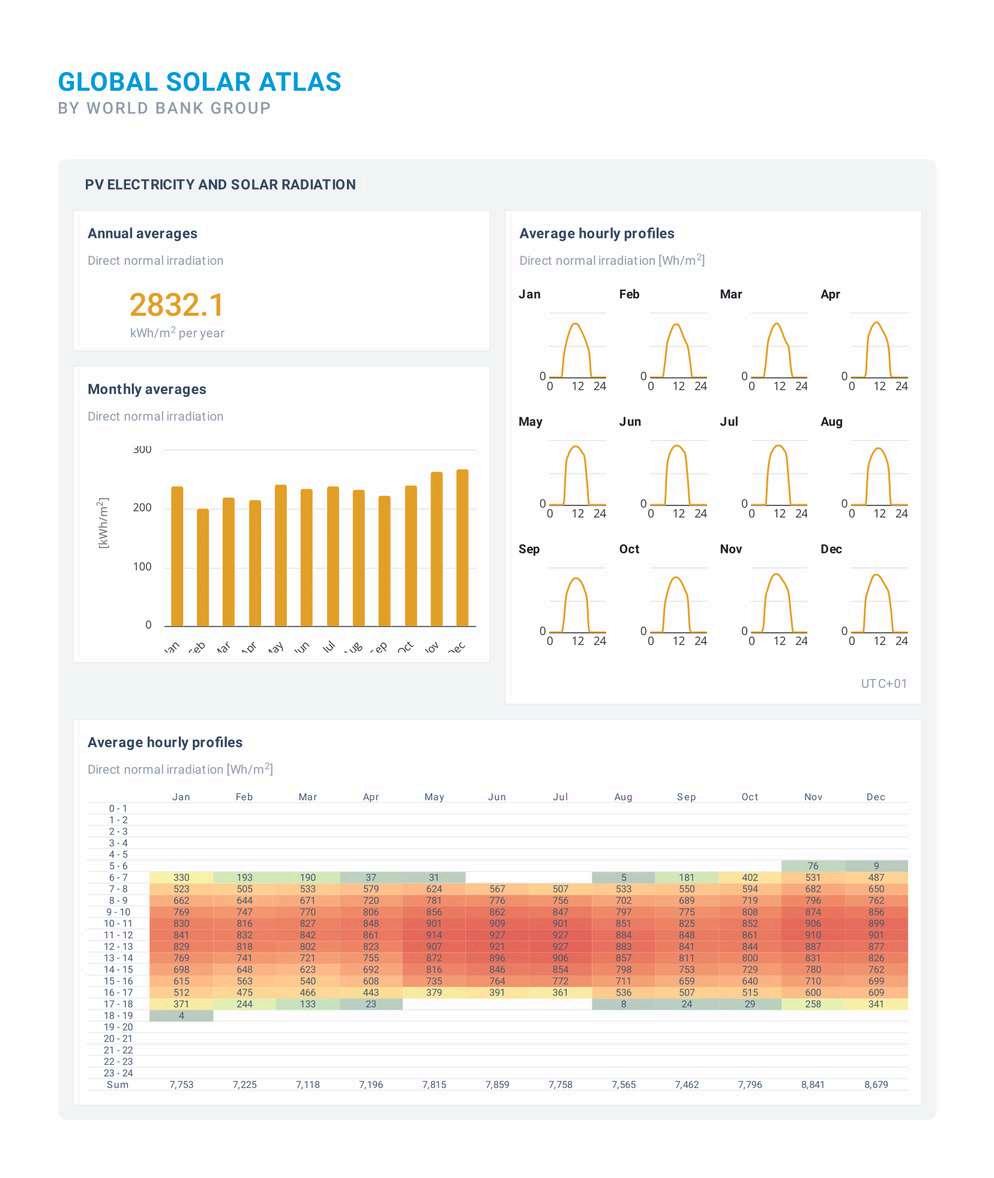
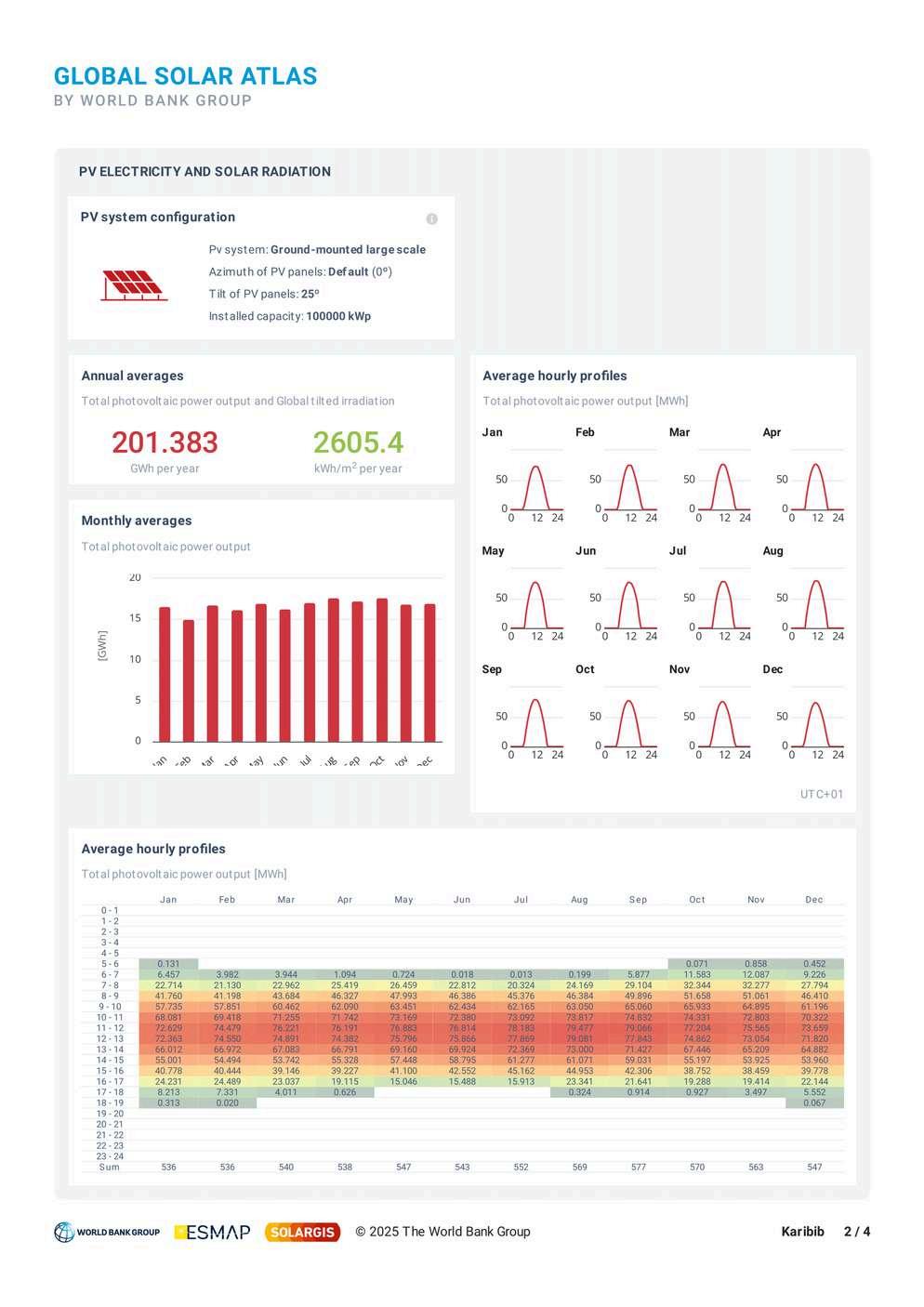
Buruxa Aribes is a Graduate Intern (Young Professional Development) who is passionate about transforming complex ideas into clear, accessible, and engaging content She spends much of her time conducting research, analysing data, and crafting narratives that inform and inspire. Currently pursuing a Bachelor of Commerce in Law at Southern Business School, Buruxa has developed a strong understanding of governance, regulations, and legal frameworks - knowledge that enhances her approach to research and content development By combining her academic foundation in law with hands-on experience at RDJ Publishing, she has come to appreciate the critical role that clear and accurate communication plays in driving meaningful impact.
1. What inspired you to pursue this internship at RDJ Consulting?
Honestly, I was drawn to RDJ Consulting because I wanted a space where research wasn’t just theoretical, where it shaped real-world decisions I’ve always been curious about how communities, policies, and infrastructure projects intersect, and this felt like the perfect place to explore that I also liked that this internship would challenge me to grow: to sharpen my research and writing skills while learning from professionals who’ve been in the field. I wanted to be part of work that matters, not just reports that sit on a shelf
2. Can you share a recent piece you worked on that you're particularly proud of?
Two pieces I’m especially proud of are “WhatsApp Innovation in Africa” and “International Fishing Rights ” Writing about WhatsApp innovation was fascinating because it’s not just about technology it’s about how people connect, businesses grow, and communities interact. The fishing rights piece was more complex; I had to break down international laws, treaties, and economic implications, which was a challenge, but seeing it all come together in a way that made sense to readers was incredibly rewarding Both taught me that with research and storytelling, you can make even complicated topics feel relatable and meaningful.
3. How do you balance creativity and accuracy in your writing?
I like to think of it like this: accuracy is the foundation, it’s what makes your work trustworthy Creativity is the way you
make it engaging, so people want to read and understand it I usually start with research, factchecking, and analysis, and then I ask myself how I can present it in a way that tells a story, connects with readers, or paints a picture It’s about making sure people understand and feel the importance of what they’re reading without ever compromising the truth.
4. How do you plan to use your writing and research skills to contribute to real-world change?
I see my skills as tools to bridge knowledge and action. Good research is useless if it stays locked in a document; it needs to reach people who can make decisions or understand its impact I want to produce work that simplifies complex issues, informs policymakers, and inspires communities to engage with solutions. Whether it’s policy briefs, articles, or project reports, I want my writing to help people see the bigger picture and take meaningful steps forward
5. What has been the most surprising thing you’ve learned during your time here?
I’ve been surprised by how much small; behind-thescenes work matters. A carefully written paragraph, a corrected figure, or even double-checking sources can completely change how a project is understood or executed I’ve also learned just how collaborative development work is, seeing how different voices, from technical experts to community members, come together has been eye-opening. It’s shown me that impact isn’t always flashy; it’s built quietly, piece by piece.
6. How has this internship shaped your career aspirations?
This experience has clarified that I want to build a career at the crossroads of law, research, and communication I now see that I can combine my legal knowledge with research and writing to contribute to projects that shape policy and development in tangible ways. I’ve learned that even small contributions, like a well-researched report or clear article, can help people make better decisions and influence real change That’s exciting to me and keeps me motivated
7. In conclusion, what advice would you give your future self about staying inspired and grounded in your work?
I’d tell myself to stay curious, stay humble, and always remember why I started Inspiration isn’t constant, it comes from connecting with purpose and seeing the real-world impact of your work I’d also remind myself to celebrate the small wins, the quiet progress, and the thoughtful contributions, because they all build up to something bigger. Staying grounded and inspired is about keeping your eyes on the why, not just the how.

Namibia Airports Company (NAC)
Description: Repair of Runway and Taxiway at Eros Airport
Bid Closing date: 03 November 2025 https://www.airports.com.na/procurement/repair-of-runway-and-taxiway-at-eros-airport/381/
Development Bank of Namibia
Description: Procurement of Project Management Consultancy Services for the DBN Mentoring and Coaching Programme –for a Period of Thirty-six (36) months (Time-Based Contract)
Bid Closing date: 17 November 2025 at 10h00 https://www dbn com na/wp-content/uploads/2025/10/Procurement-of-Project-Management-Consultancy-Services pdf
Kunene Regional Council
Description: Supply of Gas Refill to various Schools in Kunene Region for a Period of 36 Months.
Bid Closing date: 11 November 2025 at 11h00 https://kunenerc gov na/open-bids
NAMDEB
Description: Invitation to Tender for the Operation of BG36V and Sonic Drill Rigs. Compulsory Physical Site Inspection: 22 Oct 2025
Bid Closing date: 11 November 2025 at 16h00 https://namdeb com/wp-content/uploads/2025/09/Tender-Advert- E056-ND-2025 The-Operation-of-BG36V-and-Sonic-Drills pdf
NAMCOR
Description: Maintenance and Repair Services for the National Oil Storage Facility (NOSF), Jetty and Coastal Depots for a period of two (2) Years.
Pre-bid meeting date: 31 Oct 2025
Bid Closing date: 16 January 2026 at 11h00 AM Namibian Time https://www namcor com na/wp-content/uploads/2025/10/Invitation-to-Bid-Maintenance-and-Repair-Services-for-the-NOSFJetty-and-Coastal-Depots-for-a-period-of-two-2-Years pdf
NamPower
Description: Procurement of Consultancy Services for Assessment of Proposed Sites and Provision of Architectural and Civil Designs for the Construction of Additional Offices at Ruacana Power Station.
Bid Closing date: 21 Nov 2025 at 10h00 Namibian Time https://www nampower com na/Bid aspx?id=292273








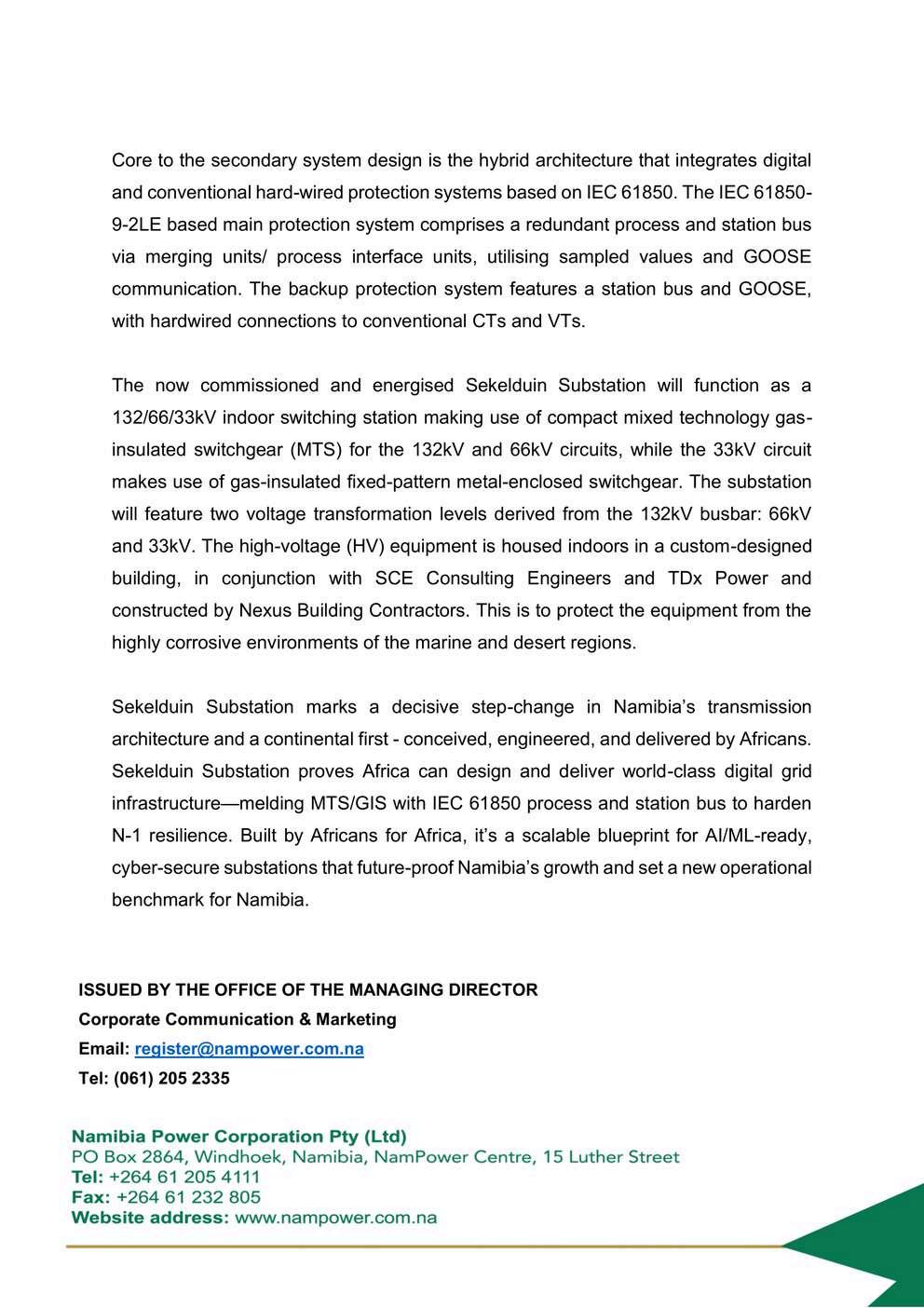


DAVID JARRETT
EDITORINCHIEFAND CHIEFEXECUTIVEOFFICER
@RDJGROUP
NICOLE FELIX CHIEFDESIGNER (LAYOUTANDDESIGN) @RDJPUBLISHING
SILPA KANGHONO COORDINATOR:DIGITALMARKETINGAND EVENTS
@RDJPUBLISHING
LAHJA AMAAMBO CONTRIBUTINGAUTHOR @RDJGROUP
GRACE KANGOTUE CHIEFRESEARCHER/ECONOMIST EDITOR @RDJCONSULTING
RESEARCHBY: PUBLISHEDBY:


PRINTEDBY:


